Portuguese wines have more than two thousand years of history and

Portuguese wines have more than two thousand years of history and were introduced by the Romans. During the Middle Ages, Christian monks played an important role in the development of Portuguese wines. In the 15th century, Portugal began to expand its markets and exported wines to Europe and other parts of the world. In the 19th century, phylloxera destroyed most of the Portuguese vineyards, but the wine industry recovered and modernized in the 20th century. Currently, Portugal is known for its high quality wines, such as Porto, Vinho Verde, Dão, Alentejo, Douro, among others.
Vinho Verde is a type of wine produced in the Minho region
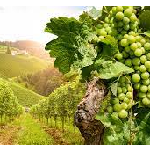
Vinho Verde is a type of wine produced in the Minho region, in northwest Portugal. The name "verde" does not refer to the color of the wine, but to its youth and freshness. It is a young, light, slightly effervescent wine with a low alcohol content, usually between 9% and 11%. The production of Vinho Verde is made with grapes that grow in the vineyards of the region, which is influenced by the humid and cool climate of the Atlantic. The main grapes used in the production of Vinho Verde are Alvarinho, Loureiro, Trajadura and Arinto, among others. Vinho Verde can be white, red or rosé, but most wines produced in the region are white. In addition, Vinho Verde can also be dry or semi-dry, with a fresh and fruity taste. Vinho Verde is a protected designation of origin (DOP) in Portugal and is regulated by the Instituto dos Vinhos do Douro e do Porto (IVDP). It is a wine that has gained more and more admirers around the world due to its fresh and uncomplicated taste.
Test yourself with one of these challenges 👇
Discover some interesting facts about Portuguese Wines
Douro Wine is a wine produced in the Douro region of Portugal
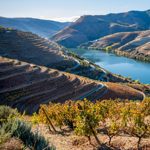
Douro Wine is a wine produced in the Douro region of Portugal, which is known for its terraced vineyards on the steep slopes of the Douro River. The region is one of the oldest in the world, having been established in 1756. The wine is produced from several grape varieties, including Touriga Nacional, Tinta Roriz and Touriga Franca, among others. The region produces a wide variety of wines, from full-bodied, rich reds to fresh, light whites. The most famous wine produced in the Douro region is Port Wine, which is a fortified and sweet wine. The wine region has a rich and interesting history, including the construction of several historic quintas (farms) that have been converted into luxury hotels and tourist sites. It is one of the most prestigious wines in Portugal. It has an intense and complex flavor and is often aged in oak barrels to develop its distinctive flavor.
Port Wine
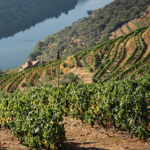
Port Wine is a fortified and sweet wine produced exclusively in the Douro region of Portugal. It is an iconic wine that has a long history, having been produced in the Porto and Douro region since the 17th century. The Port Wine production process begins with the harvesting of grapes on the steep slopes of the Douro valley. The grapes are trodden by foot in lagares (large stone tanks), where they are crushed to extract the juice. The juice is then fermented with the addition of brandy, which stops fermentation and keeps the residual sugar in the wine. The result is a fortified wine with an alcohol content between 19% and 22%. Port Wine is then aged in oak barrels, where it develops a complex and characteristic flavor. The barrels are stored in aging cellars in Porto, where variations in temperature and humidity help develop the wine's unique flavor.
There are several types of Port, including Tawny Port

There are several types of Port, including Tawny Port, which is aged in barrels for a period of time and has a nutty and dried fruit flavor. Ruby is aged for a shorter period and has a more fruity and sweet taste. Vintage is the rarest and most valuable type of Port, produced only in exceptional years and aged for many years in barrels before being bottled. Port Wine is often served as a dessert or as a dessert wine at special dinners. It can also be enjoyed on its own as an elegant and sophisticated drink. It is one of the most famous and appreciated wines in the world and is considered a national treasure of Portugal.
Madeira Wine is a fortified and sweet wine produced in Madeira Island, Portugal
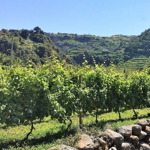
Madeira Wine is a fortified and sweet wine produced in Madeira Island, Portugal. Like Port Wine, it is fortified with brandy during the fermentation process, which stops fermentation and keeps residual sugar in the wine. This wine is made from four varieties of grapes, namely Sercial, Verdelho, Boal and Malvasia. These grapes are harvested from steep slopes on Madeira Island and undergo a special aging process, which involves exposure to heat and sunlight. This process is known as "estufagem" and helps to develop the characteristic flavor of Madeira Wine. Wine is classified according to sweetness and aging time, with the most common types being Sercial, Verdelho, Bual and Malvasia. It is prized for its complexity and richness of flavor, and is used in many Portuguese and international dishes. Madeira Wine is considered a national treasure of Portugal.
Bairrada wine is produced in the demarcated region of Bairrada
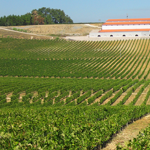
Bairrada wine is produced in the demarcated region of Bairrada, located in central Portugal. This region is known for its Mediterranean climate, limestone soil and Atlantic influence, which combined create ideal conditions for growing grapes. The grapes used in the production of Bairrada wine include Baga, Touriga Nacional and Alfrocheiro, which are grown on steep slopes. Bairrada wine is produced through a fermentation process in stainless steel tanks and is aged in oak barrels for a minimum period of six months, which helps to develop its characteristic flavor and smoothness. Bairrada wines can be red, white or rosé, with red being the most common. They are known for their deep, dark color, fruity aroma and intense flavor of red fruits such as blackberry, raspberry and cherry, combined with hints of spice and a lingering finish.
Test yourself with one of these challenges 👇
HOME














